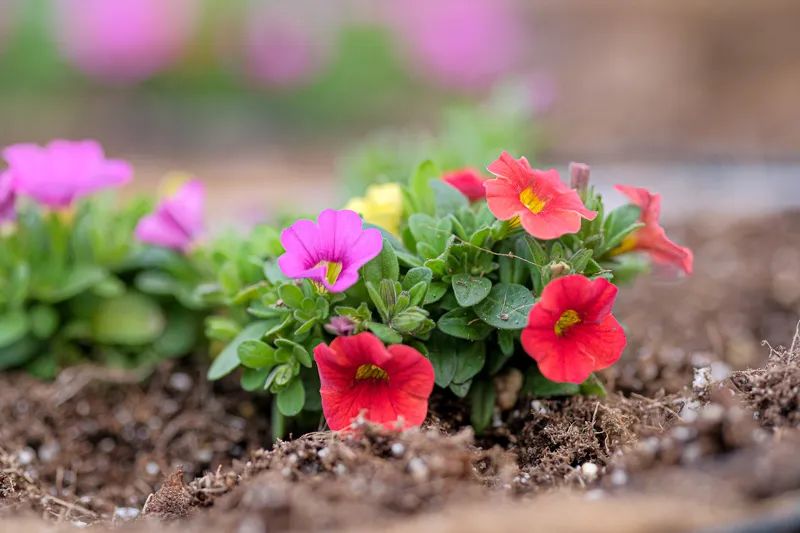
Planting for Privacy
Using a mix of plants to create your great escape
Finding moments of solitude in the comfort of your backyard can be precious. With today’s tight-knit neighborhoods, however, that can be easier said than done. Here’s the good news. With a little strategic planting, you can transform your yard into a secluded oasis.
Mick Gainan of Gainan’s Garden Center has been helping customers plant for privacy for decades. He says using trees, hedges, perennials and containers will not only create a spark of interest, but will also help shield your space from prying eyes.
“Seeing your neighbor across the way, you know they've spent a lot of money on a pergola, and their yard is still pretty transparent,” Mick says, adding that greenspace is also a great investment. “The value of a piece of property, a home, is really based on the amount of privacy there is with established landscapes.”
In fact, Mick says, when it comes to plotting out a landscape, 5 to 10 percent of your home’s value is typically spent on the outdoor areas. That means if you own a $300,000 home, $15,000 to $30,000 should be invested in not only plants but retaining walls, fences, patios and decks.
When coming up with a plan, it’s as simple as picking plants you would love to look at, making sure you incorporate color and texture with the plants you choose, and then, most importantly, read the labels on each one to make sure they are a good fit for the space and sun exposure.
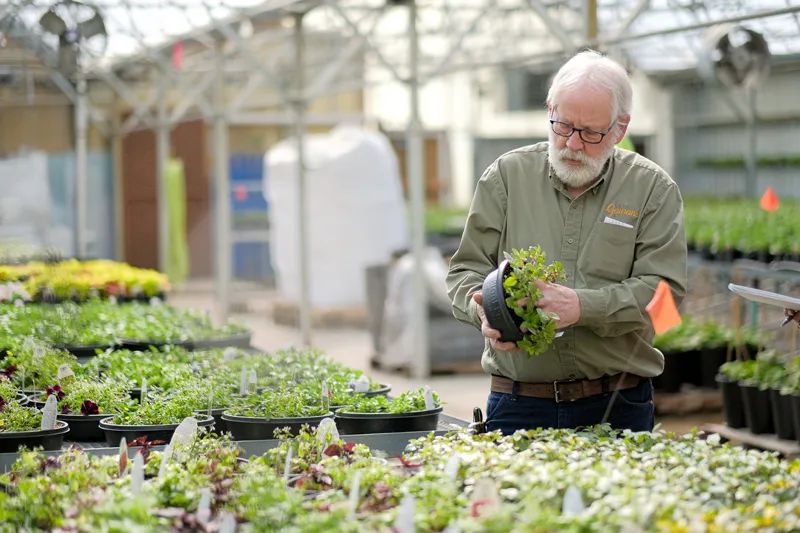
START WITH TREES TO PLANT FOR PRIVACY
If you have a fence line in your yard and would rather look at a bit of nature, Mick loves suggesting ornamental trees.
“They only get about 20 to 30 feet tall and 15 to 30 feet wide, that gives you an immediate screening for privacy between neighbors,” he says.
Mick has a few favorite ornamental trees that grow well in our climate. The first is the Spring Snow Crabapple.
“Right around Mother’s Day, it is just screaming with all these white flowers. And then when it starts dropping all its petals, they're everywhere, but they shrivel up to nothing and they don’t produce any fruit,” he says. His next two favorite ornamental trees are the Showy Mountain Ash, known for its contrast of dark burgundy foliage and the Autumn Blaze Maple. “The contrast of color and texture is really what is most exciting,” Mick says.
When planting trees, make sure you diversify your landscape and plant a combination of different trees. Planting the same variety not only lacks interest but, Mick says, “If one of the trees gets an illness, the next one is going to get sick, and you are going to lose all of your landscape at once.”
Mick also likes planting deciduous trees with evergreen varieties. He loves Columnar Junipers.
“I like that plant a lot because it is a native plant,” Mick says, and they don’t require a whole lot of maintenance. “But you’ve got to read the labels because there are some that get three to four feet wide and others that will get six to eight feet wide.”
When planting trees, Mick says if you have a good working relationship with your neighbors and they too are planning out their landscape, it’s not a bad idea to get together and stagger trees and plants to create even more privacy between yards. The result he says is a layered landscape that provides functional beauty.
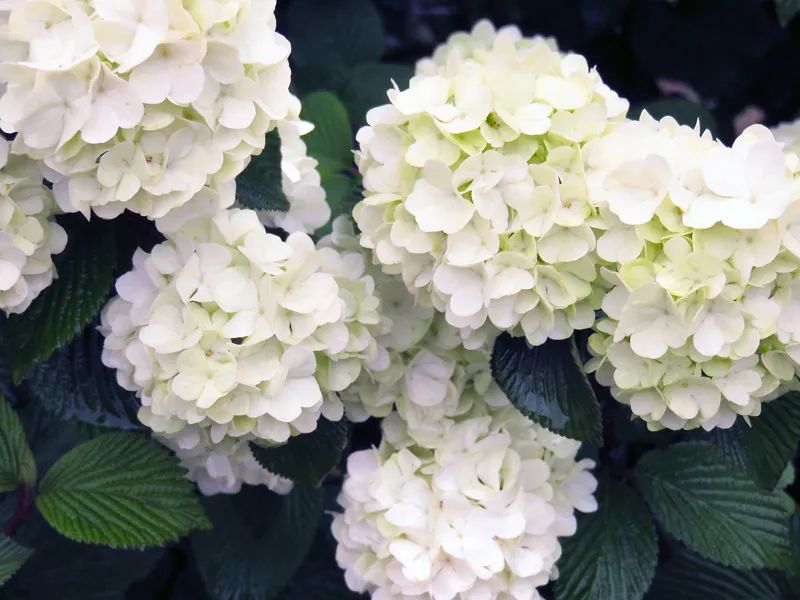
LIVING WALLS
Bushes and hedges can be used to create living walls, offering both visual appeal and a border to define spaces in your back yard. And when it comes to planting one, the options are endless.
There’s cotoneaster with its shiny foliage and small berries. There’s potentilla, a bush that’s perfectly fine without being watered a lot. And then, there’s one of Mick’s favorites, the hydrangea. “You just see them in their glory from midsummer into fall.” With close to a dozen varieties, there’s sure to be one that will fit your yard perfectly.
If you want to create a wall of greenery, Mick suggests Fine Line Buckthorn or Arborvitae. Both plants require minimal maintenance and, when spaced properly, will create a denser privacy screen. Mick does caution, though, to avoid Arborvitae if you have deer in your neighborhood. “It’s like deer candy,” he says with a laugh.
Lastly, if you want a hedge with a pop of seasonal color, Mick says you can’t go wrong with lilacs. There are now 13 different varieties, including dwarf lilacs, perfect for smaller space yards.
“The smell is amazing and boy when they've got a good year, they are beautiful to drive along. You can just see these hedges — established hedges — spanning 12 to 15-feet wide.
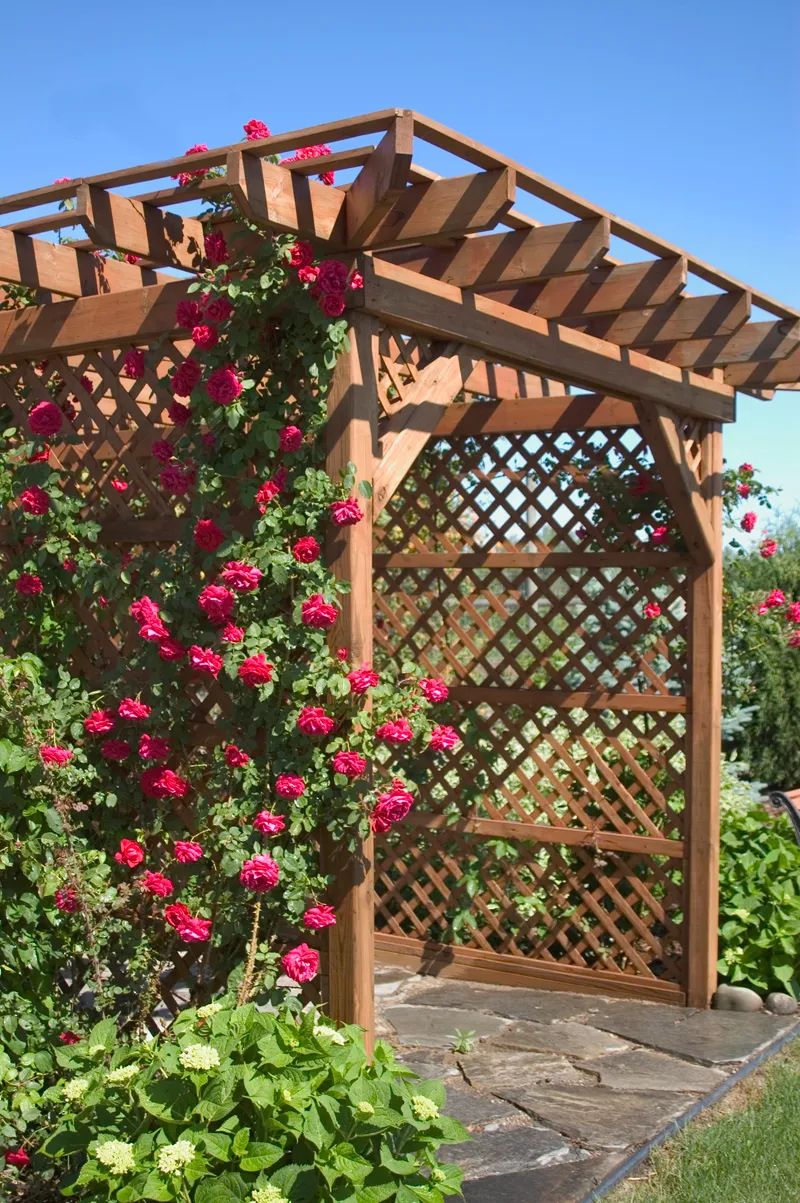
COLORFUL CLIMBERS
If you need a little vertical height, try using trellises and climbing plants for a showy seasonal screen.
Clematis is a showstopper that many green thumbs know and love. But have you ever tried wisteria? Recently, the USDA reclassified our area as 5A for its plant hardiness zone. That means plants we never would have thought to plant — like the climbing beauty wisteria — might now be a possibility.
Another climber Mick loves is the pollinator plant honeysuckle for its vibrant color and sweet scent. There are many varieties of climbing roses and Thunbergia, a quick climber known for its colorful, velvety flowers.
When it comes to creating a place for climbers to prosper, sure, you can use a trellis, but you don’t have to. “It can be anything that gives a plant a reason to climb,” Mick says. When the plant starts looking for something to cling to, simply train the leaf stems by wrapping it around whatever you plan to use. Mother Nature will do the rest.
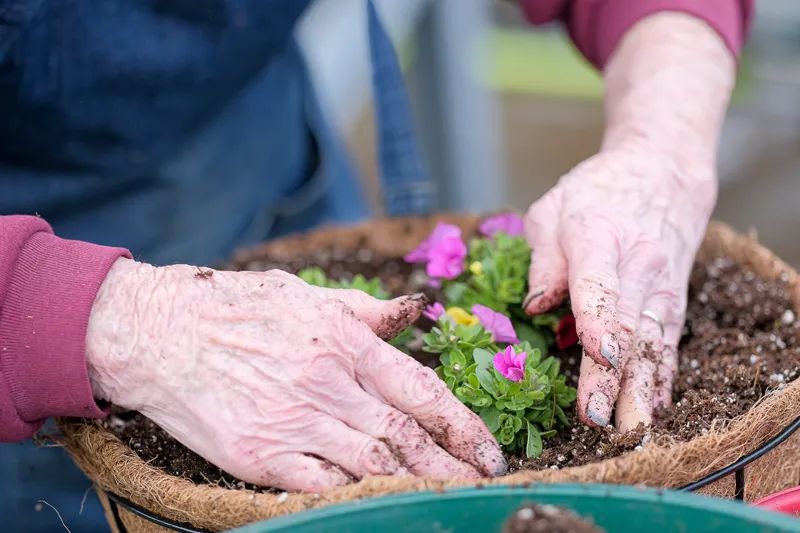
CONTAINER
With Montana’s short growing season, containers have always been a go-to for adding a splash of color on patios and porches. To choose the right combination, all you need to do is remember three words — thrillers, fillers and spillers.
“A thriller is just something dramatic in the middle that says, ‘Oh wow!’ Think of a geranium that is just a prolific bloomer,” Mick says. Fillers are smaller plants like petunias, marigolds or portulaca. And then there are the spillers, the trailing plants like Tahitian bridal veil or one of the many varieties of ivy to draw the plant over the edge.
To make sure your container plants get off to the best start, Mick recommends using a large enough pot so that the soil will retain sufficient water. Using a small pot will require at least twice-a-day watering as opposed to a big pot that offers more soil mass.
If you shy away from large pots because of the soil it will take to fill it, Mick says you can get creative and use crushed water bottles in the bottom half to conserve a little of that good rich soil.
For sunny areas, think about using a double-walled container. The space between the walls allows the air to flow, keeping the pot a little cooler in the sizzling summer sun.
There are plenty of showy flowers that you can plant in your pots but there are two that Mick couldn’t wait to show off. The first is a new variety of New Guinea Impatiens.
“They used to be just a shade worshiper. But now they're sunpatiens, so they'll take a little bit more daylight and they have this kind of magical sort of sparkle to them,” he says.
The second plant is a new variety of vinca vine. It’s an annual with three shades of green on its leaves.
“It’s got so much contrast,” Mick says. “You put it in a hanging basket and when the wind blows it just dances back and forth.”
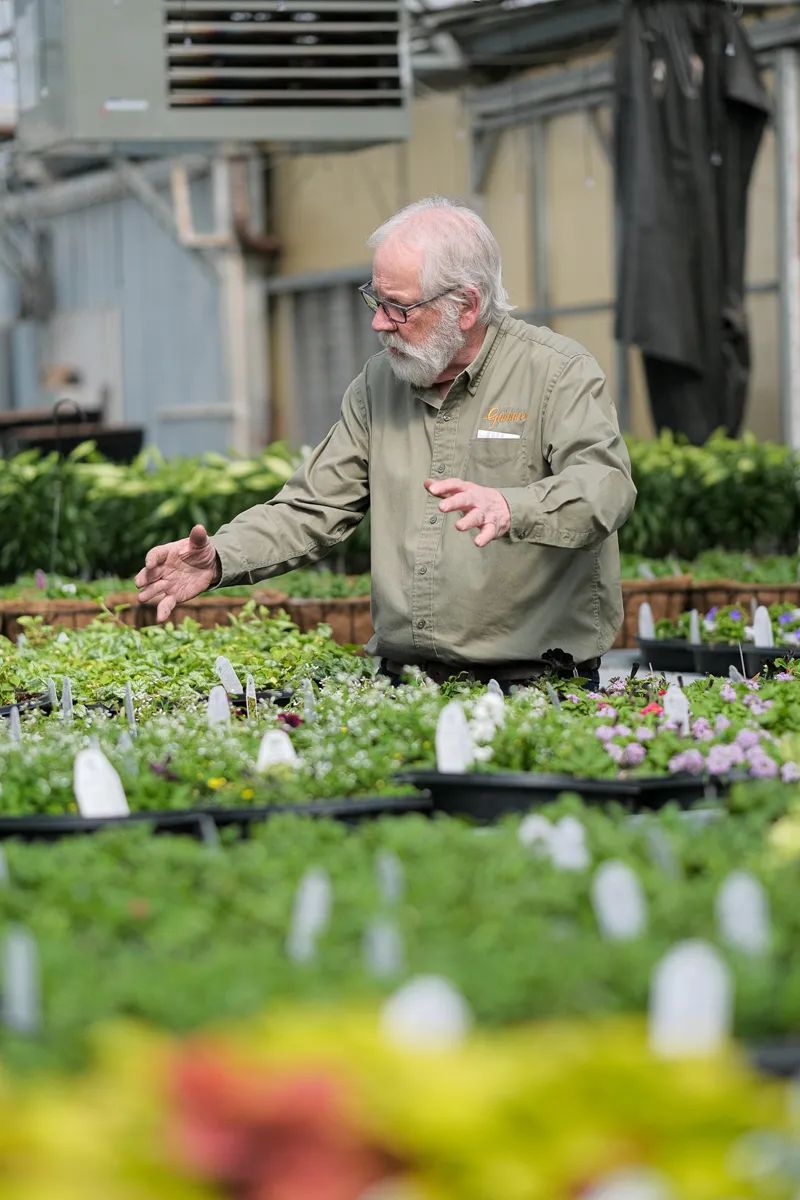
TAKE YOUR TIME & ASK FOR HELP
If you’ve plotted out your dream yard and just aren’t sure if you’re on the right planting track, Mick says Gainan’s is happy to help design bits and pieces for those do-it-yourselfers.
“All we need is a picture of the area and the exposure you have,” he says.
No matter what your landscape plan includes, Mick says don’t expect massive change overnight.
“It’s going to take 15 to 20 years for that landscape to mature to where people can really feel like they are in their own little world.”











